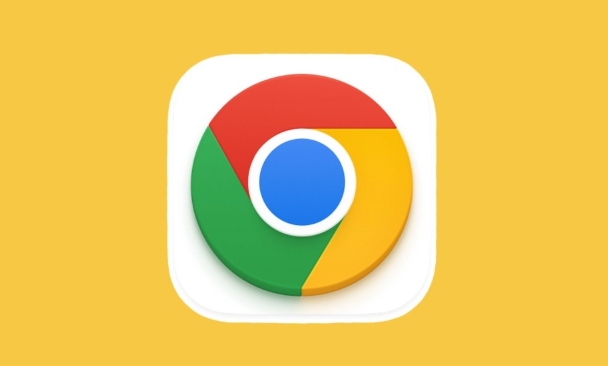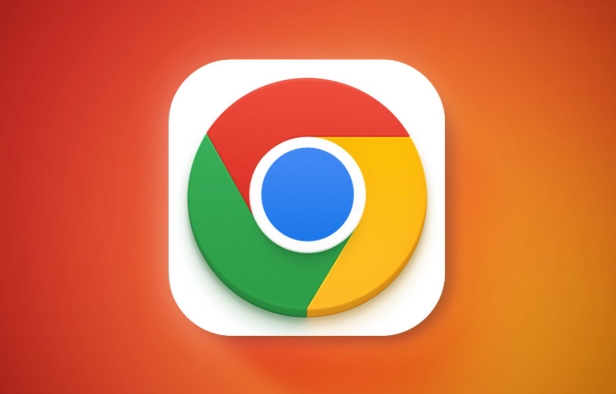How to fix ERR_HTTP2_PROTOCOL_ERROR in Google Chrome?
Jul 31, 2025 am 08:15 AMFirst refresh the page and check other websites to confirm whether it is a temporary or single site problem; 2. Clear browser cache and cookies to avoid corrupt data interference with HTTP/2 connections; 3. Temporarily disable all extensions to troubleshoot communication interruptions (such as ad blocking or security tools); 4. Disable "Experimental QUIC protocol" in chrome://flags, force HTTP/1.1 or standard HTTP/2 to eliminate protocol conflicts; 5. Check antivirus software, firewall or proxy settings, temporarily turn off HTTPS scanning function, and eliminate middleware interference to SSL/TLS; 6. Perform DNS refresh and network reset, and run ipconfig /flushdns, /release, /renew and netsh winsock on Windows reset, use dscacheutil and killall commands on Mac, or switch to Google DNS; 7. Update Chrome browser and operating system to ensure there are no known HTTP/2 compatibility issues; 8. Use Ctrl Shift N to turn on traceless mode tests to verify whether errors have been caused by extension or local data; 9. If you are a website administrator, you need to check the validity of SSL certificates, server configuration and HTTP/2 enabled status, and downgrade to HTTP/1.1 if necessary for fault isolation; if the above steps are invalid, you can try to replace the device or network to determine the source of the problem. In most cases, you can solve it by cleaning the cache, disabling QUIC or turning off the interference software.

The ERR_HTTP2_PROTOCOL_ERROR in Google Chrome usually happens when there's a problem with how the browser communicates with a website using the HTTP/2 protocol. It can be caused by network issues, browser settings, extensions, or server-side problems. Here's how to fix it step by step:

1. Refresh the Page and Check Other Sites
Before troubleshooting, confirm it's not a temporary or site-specific issue:
- Press F5 or Ctrl R to reload the page.
- Try opening other websites. If only one site fails, the issue might be on their server.
Some sites misconfigure HTTP/2, causing protocol errors. If only one site is affected, it might resolve on its own.

2. Clear Browser Cache and Cookies
Corrupted cache or cookies can interfere with HTTP/2 connections.
Steps:

- Press Ctrl Shift Delete to open Clear Browsing Data.
- Select "All time" as the time range.
- Check "Cookies and other site data" and "Cached images and files" .
- Click "Clear data" .
- Restart Chrome and try the site again.
3. Disable Extensions Temporarily
Some extensions (especially ad blockers, privacy tools, or security plugins) can disrupt HTTP/2 communication.
How to test:
- Type
chrome://extensionsin the address bar. - Toggle off all extensions.
- Reload the problem page.
- If it works, re-enable extensions one by one to find the culprit.
4. Disable QUIC and Force HTTP/1.1
Chrome uses a protocol called QUIC (based on HTTP/3) which can sometimes conflict with HTTP/2.
Disable QUIC:
- Go to:
chrome://flags - Search for "Experimental QUIC protocol"
- Set it to Disabled
- Restart Chrome
This forces Chrome to use HTTP/1.1 or standard HTTP/2, which may resolve the error.
5. Check Antivirus, Firewall, or Proxy Settings
Security software or corporate networks often intercept HTTPS traffic (via SSL/TLS decryption), which can break HTTP/2.
What to do:
- Temporarily disable antivirus/firewall (especially if it has "web protection" or "HTTPS scanning").
- If you're on a company or school network, contact the admin—proxy servers may be interfering.
- Avoid using public Wi-Fi with captive portals or deep packet inspection.
6. Flush DNS and Reset Network
Stale DNS or network settings can cause connection issues.
On Windows:
- Open Command Prompt as admin.
- Run these commands one by one:
ipconfig /flushdns ipconfig /release ipconfig /renew netsh winsock reset
- Restart your computer.
On Mac:
- Open Terminal and run:
sudo dscacheutil -flushcache sudo killall -HUP mDNSResponder
You can also try switching to Google DNS (8.8.8.8 and 8.8.4.4) in your network settings.
7. Update Chrome and Your System
An outdated browser or OS might have bugs affecting HTTP/2.
- Go to
chrome://settings/helpto check for Chrome updates. - Make sure your OS is up to date.
8. Try Incognito Mode
Incognito mode disables most extensions and uses clean session data.
- Press Ctrl Shift N to open an incognito window.
- Visit the site. If it works, the issue is likely with an extension or stored data.
9. Check Server-Side Issues (For Website Owners)
If you're managing the site:
- Ensure your SSL certificate is valid and properly configured.
- Avoid mixing HTTP/1.1 and HTTP/2 resources incorrectly.
- Update your web server (Apache, Nginx, etc.) and reverse proxies.
- Disable HTTP/2 temporarily to test: sometimes falling back to HTTP/1.1 helps isolate the issue.
Most cases are client-side and can be fixed with cache clearing, disabling QUIC, or turning off interfering software. If none work, try accessing the site from another device or network to confirm the root cause.
Basically, start simple—refresh, clear cache, disable extensions—then move to network and protocol settings.
The above is the detailed content of How to fix ERR_HTTP2_PROTOCOL_ERROR in Google Chrome?. For more information, please follow other related articles on the PHP Chinese website!

Hot AI Tools

Undress AI Tool
Undress images for free

Undresser.AI Undress
AI-powered app for creating realistic nude photos

AI Clothes Remover
Online AI tool for removing clothes from photos.

Clothoff.io
AI clothes remover

Video Face Swap
Swap faces in any video effortlessly with our completely free AI face swap tool!

Hot Article

Hot Tools

Notepad++7.3.1
Easy-to-use and free code editor

SublimeText3 Chinese version
Chinese version, very easy to use

Zend Studio 13.0.1
Powerful PHP integrated development environment

Dreamweaver CS6
Visual web development tools

SublimeText3 Mac version
God-level code editing software (SublimeText3)

Hot Topics
 How to manage Chrome's component updates
Jul 16, 2025 am 12:02 AM
How to manage Chrome's component updates
Jul 16, 2025 am 12:02 AM
Chrome allows for the management of automatic update components in a variety of ways. First, you can enter chrome://components/ in the address bar to manually check and update built-in modules such as Flash and PDF readers; secondly, advanced users can disable automatic updates of specific components through group policies or configuration files for enterprise environments; finally, you can use ad blocking extensions or scripting tools to reduce interference with update prompts. The above method can help users control the update rhythm on demand while taking into account security and user experience.
 How to fix Chrome's spell checker not working
Jul 20, 2025 am 12:03 AM
How to fix Chrome's spell checker not working
Jul 20, 2025 am 12:03 AM
When Chrome spelling check fails, you can troubleshoot and fix it by following the following steps: 1. Confirm that the "Use Spelling Check" function is enabled and check whether the corresponding language is enabled in the language settings; 2. Adjust the input language order, delete the redundant language, and ensure that the main language enables spelling check; 3. Close possible conflicting extensions, especially syntax or translation plug-ins; 4. Update Chrome to the latest version and check the operating system updates. If it still doesn't work, try resetting Chrome settings.
 How to stop Chrome from updating in the background on Mac
Jul 21, 2025 am 12:41 AM
How to stop Chrome from updating in the background on Mac
Jul 21, 2025 am 12:41 AM
To prevent Chrome from automatically updating on Mac, it can be done by disabling update services, modifying permissions, and restricting network access. 1. Use terminal commands to disable the GoogleSoftwareUpdate daemon to prevent background updates; 2. Modify update directory permissions to prevent Chrome from starting the update process by itself; 3. Restrict Chrome's outbound network connection through system firewall or third-party tools to further eliminate update requests. Using these methods in combination can effectively prevent Chrome from being automatically updated.
 How to manage multiple users in Chrome
Jul 16, 2025 am 12:55 AM
How to manage multiple users in Chrome
Jul 16, 2025 am 12:55 AM
To add multiple users, click the avatar in the upper right corner to select "Add" or "Manage other users", add an account or create a guest account, and after setting it, you can use their respective bookmarks, history and extensions independently. Each user data is completely isolated, including passwords, plug-ins, automatic filling information, etc. To delete a user, go to Settings > Profile, select a user and click "Remove from this device", or you can also modify the user name and avatar for identification at any time.
 How to stop Chrome from automatically opening PDF files
Jul 21, 2025 am 12:09 AM
How to stop Chrome from automatically opening PDF files
Jul 21, 2025 am 12:09 AM
To let Chrome download directly instead of opening it when clicking on the PDF link, 1. Enter chrome://settings/content/pdfDocuments to check "DownloadPDFfilesinsteadofautomatically opening theminChrome"; 2. Check whether there are plug-ins such as Lightpdf or Smallpdf interfering behavior, you can try to disable the test; 3. You can use the developer tools to copy the link and paste the new tag to trigger the download. The above methods can be selected according to the situation.
 How to fix Chrome not opening mailto: links in Gmail
Jul 17, 2025 am 12:10 AM
How to fix Chrome not opening mailto: links in Gmail
Jul 17, 2025 am 12:10 AM
The main reason Chrome does not open the mailto: link directly in Gmail is that the default mail client is not set correctly or Gmail is not registered as an application that handles the mailto: protocol. Solutions include: 1. Set Gmail as the default mail application in Windows settings; 2. Enable Gmail protocol processing permissions in Chrome and set as default; 3. Manually click on the mailto: link to contact the Gmail registration protocol; 4. Use Chrome plug-in such as Mailto:forGmail to force jump. In most cases, it can be solved through system and browser settings, and the plug-in can be used as a backup solution.
 How to clear the HSTS cache for a site in Chrome
Jul 17, 2025 am 12:25 AM
How to clear the HSTS cache for a site in Chrome
Jul 17, 2025 am 12:25 AM
To clear the HSTS cache in Chrome, visit the chrome://net-internals/#hsts page, find the "Deletedomainssecuritypolicies" section, enter the target domain name and click "Delete". 1. Open Chrome's HSTS management page; 2. Enter the domain name in "Deletedomainsecuritypolicies" and delete it; 3. Test whether it is successful and try to access the website through http://. Note: This operation only deletes the HSTS rules for specific domain names. If you revisit the website via HTTPS, the browser may enable HSTS again. For inaccessible
 Chrome keeps opening new tabs by itself
Jul 22, 2025 am 12:22 AM
Chrome keeps opening new tabs by itself
Jul 22, 2025 am 12:22 AM
The problem of Chrome automatically popping up new tabs is usually caused by malicious extensions, advertising scripts, or browser hijacking. The solutions are as follows: 1. Check and uninstall suspicious extensions, especially ad-class plug-ins; 2. Clear browser caches and cookies to eliminate data corruption; 3. Check whether the homepage and default search engine settings have been tampered with and manually corrected; 4. Use antivirus software such as WindowsDefender or Malwarebytes to scan and clear potential malware; 5. Finally, try resetting Chrome settings to restore the default configuration. Troubleshooting in this order can effectively solve most abnormal labeling problems.







